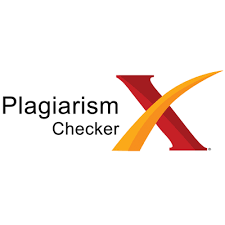AUTONOMOUSLY RIDING GOOGLE MAPS TO TRAVEL TO ENGLISH SPEAKING COUNTRIES: LINGUISTIC LANDSCAPE
Abstract
Abstract: All English Department students dream to visit English-speaking countries. One reason is that they want to practice their English to communicate with native speakers in real communication, and to immerse themselves into the English language-rich environment. However, only a small portion of students have the means and opportunity to do so. This paper will show how Google Maps can help students to virtually travel to English speaking countries and improve their English linguistically, pragmatically and interculturally. Actually, languages, including English, are available in public spaces and make up the linguistic landscape of a territory or a region, and linguistic landscape is potential for the teaching and learning of second and foreign languages. The linguistic element of signs is made creatively with clear, interesting, fresh and ready to understand English. They are valuable for learners to improve their English.
Full Text:
PDFReferences
Bell, N., 2012. Formulaic Language, Creativity, and Language Play in a Second Language, Annual Review
of Applied Linguistics, 32, pp. 189-205.
Chern, C. & Dooley, K. 2014. Learning English by walking down the street. ELT Journal, Advance Access,
published January 15, 2014.
Crișan, R. & Pop, A. 2013. The Efficiency of. Pragmatic Implicature in the Language of Tourism. The.
International Scientific Conference Literature, Discourse, and Multicultural Dialogue, 1st Edition.
Targu Mures, Petru Maior University, ISI Proceedings, pp.156-61.
Duraiswamy, M. (2014). Chunks-based Language Learning–Theory and Practice For the Classroom. Ideas
from the Corpora, 16(2).
Hewitt-Bradshaw, 2014. Linguistic landscape as a Language Learning and literacy resource in Caribbean
creole contexts. Caribbean Curriculum, 22, 157-73.
Kweldju, S. 2001. Presenting Grammar in the Teaching of Grammaticalised Lexis: the Balance of Grammar
and Vocabulary for Improving Reading Skill. Jurnal Teknologi Pembelajaran, 9(1).
Lewis, M. 1997. Implementing the Lexical Approach. Hove: Language Teaching Publications.
Nattinger, J. R. And J. S. DeCarrico. 1992. Lexical Phrases and Language Teaching. Oxford: Oxford
University Press.
Rotfelt, H.J. & Stafford, M.R. (2007). Toward a Pragmatic Understanding of the Advertising and Public Policy
Literature. Journal of Current Issues and Research in Advertising, 29(1), pp. 67-80.
UNESCO, 2013. Intercultural competence: Conceptual and Operational Framework.
http://unesdoc.unesco.org/images/0021/ 002197/219768e.pdf
Walinski, J.T. 2013. Relevance of Linguistic Landscape to Intercultural Competence Development in the
context of Situated Learning. International Journal of Mobile and Blended Learning, 6(2), pp.1-14.
Wray, A. 2000. Formulaic Sequences in Second Language Teaching: Principle and Practice. Applied
Linguistics, 21(4), pp.463-89.
DOI: http://dx.doi.org/10.17977/um046v2i12018p5-13
Refbacks
- There are currently no refbacks.
Copyright (c) 2018 Journal of English Language, Literature, and Teaching (J-ELLiT)
Editorial and Administration Office:
This Journal is published and managed by Department of English, Faculty of Letters, Universitas Negeri Malang.
Jl. Semarang No. 5, Malang, Indonesia.
Phone. (0341) 551312.
Homepage: http://journal2.um.ac.id/index.php/jellit/index
email: jellit.journal@um.ac.id
P-ISSN: 2580-670X
E-ISSN: 2580-9687
This work is licensed under a Creative Commons Attribution 4.0 International License.
Cover designed by Rahmati P. Yaniafari









